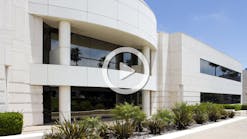Introduction
Regional water management plans almost universally rely upon large-scale reservoir storage. According to the California Department of Water Resources, the combined capacity of the 12 largest reservoirs in California is roughly 22 million acre-feet of surface water. In the face of predicted climate change and snowpack loss, those California reservoirs will probably take on a more critical role. With this transition, precise reservoir capacity ratings will become more important.
Reservoir capacity has traditionally been estimated by extrapolating from a loose grid of lead-line spot soundings. This paper introduces a new method for reservoir capacity measurement that combines cutting-edge technologies developed for seafloor mapping and digital terrain analysis. Our demonstration site is the Los Padres Reservoir in the upper Carmel River watershed of coastal central California (Figure 1).
Why Survey Reservoir Capacity
A reservoir captures the water draining from the land located upslope from its dam. It also captures all the coarse sediment and much of the fine sediment that settles from the river water before the water is released to the river below the dam. Thus, reservoirs have a finite lifespan, as water capacity is inadvertently usurped by sediment. Some reservoirs fill very slowly, but others, like the San Clemente Reservoir in Monterey County and the Matilija Reservoir in Ventura County, fill “prematurely” in just a few decades. Actual sediment yield rates can greatly exceed the anticipated rates if the watershed burns, if large magnitude storms hit, or if watershed conditions change through urbanization, rural road construction, or poor resource
management.
Reservoir operators keep track of changes in reservoir volume. The reservoir capacity is estimated immediately after construction, and then it is resurveyed periodically, and changes are analyzed. Some reservoirs have infrastructure in place to dredge new capacity, but others are doomed to end their useful lives as the storage area for several thousand acre-feet of sediment. Decommissioning such dams is costly. The cost is not typically budgeted up-front when the dams are permitted and constructed. So, reservoir operators, water purveyors, and the served public should all be very interested in monitoring resource capacity.
The Los Padres Reservoir of the Carmel River Watershed is used to supply water to the downstream reaches of the Carmel River during the dry summer season. This water supports endangered species and percolates to recharge groundwater resources for later extraction. The reservoir is fed by approximately 28,700 acres of natural landscape (Figure 1). We surveyed the reservoir capacity in fall 2008 in anticipation of sedimentation following the Basin Complex Fire of summer 2008. The watershed is steep, has high relief, underlain by very erodible bedrock, and was severely burned in the fire. Models indicated that the 1,790 acre-feet reservoir might lose 30% capacity if certain storm scenarios were realized. The objectives of the 2008 survey were to produce an accurate capacity estimate and to compare that estimate to past surveys and potential future surveys to analyze the reservoir capacity loss through time, especially in the context of the recent fire.
Traditional Survey Methods
Reservoir capacity is usually reported as a “volume-stage” table showing the volume (capacity) estimates as a function of water surface elevation (stage) for all water elevations in the reservoir. These tables have traditionally been extrapolated from point depths measured along a series of straight-line surveys across the reservoir (Figure 2). The resulting volumes have an accuracy that strongly depends on the physical spacing of the transects and the spacing of points along the transects. Increases in accuracy have been gained in recent years by using GPS for positioning and single-beam sonar for depth. If the surveys were done when the water elevation was lower than capacity, the dry portion of the reservoir had to be surveyed using standard land-survey instruments.
New Technology
Our 2008 survey of Los Padres Reservoir represents a “first” in survey technology. The Seafloor Mapping Lab (SFML) of California State University Monterey Bay has pioneered the coupled use of sonar multi-beam seafloor mapping and vessel-mounted terrestrial lasers (LiDAR) technology for simultaneous mapping of coastal seafloor and the associated emergent beach and seacliifs. The CSU-Monterey Bay Watershed Institute joined forces with the SFML, recognizing that reservoir mapping was an obvious “water resources” application for the marine technology. A light skiff (Figure 3), or larger boat, can capture millions of individual depths (below water surface) and land elevations (above the water surface). The merged spatial data then provides a complete and accurate digital model of the reservoir. After a day of surveying and several days of computer grinding, the digital model revealed the Los Padres Reservoir as if the water had been removed (Figure 4). The elevation data were analyzed to produce a very precise volume/stage table for the water resources agency.
The technology differs from the traditional methods by taking millions of depth measurements uniformly across the submerged part of the reservoir, instead of only hundreds of depth measurements along straight transects (Figure 2). The other significant advance is using LiDAR technology to capture the dry portion of the watershed from a moving vessel. The two elevation data sets (sonar and LiDAR) were precisely positioned in map view by continuous high-precision GPS instrumentation, so the surveys are reproducible as we investigate future change.
As introduced above, one of our objectives was to compare our new capacity estimate to the most recent historical estimate. An earlier survey was performed using traditional methods in 1998. A great surprise was finding that the reservoir had “grown” several hundred acre-feet in capacity between 1998 and 2008 despite the absence of any dredging activity. Reservoir “growth” is anti-intuitive, given a lack of probable mechanism. We suspected that the differences might be an artifact caused by the improvement in survey technology. We tested that idea by making synthetic lead-line surveys through our rich digital data set, to see if sampling strategies affected capacity estimates. As we suspected, there is a strong relationship between the number of depth estimates used in a transect, and the resulting capacity estimate (Figure 5).
Extrapolating Beyond the Los Padres Reservoir
The new survey technology found about 14% more capacity than the previous survey. We do not know if all reservoir geometries would yield as much “new water,” as did the Los Padres Reservoir. The errors in other capacity surveys may be larger, depending upon the density of survey points. If California’s 12 largest reservoirs have similar errors, there are roughly 3 million acre-feet of uninventoried total water storage capacity in the State. Of course, this value is just food for thought. The real errors might be higher or lower, and site-specific reservoir plumbing might not allow us to harvest all that “new water,” because much of it might be located in the physically lowest parts of the reservoir.
This article is a brief review of a technical report located here.






